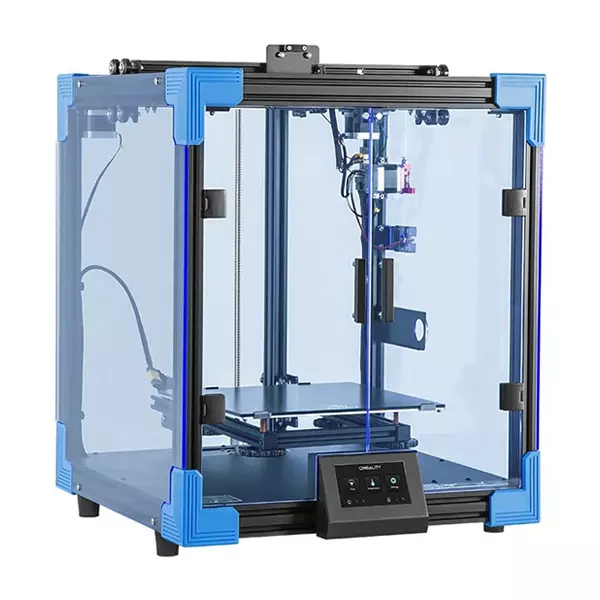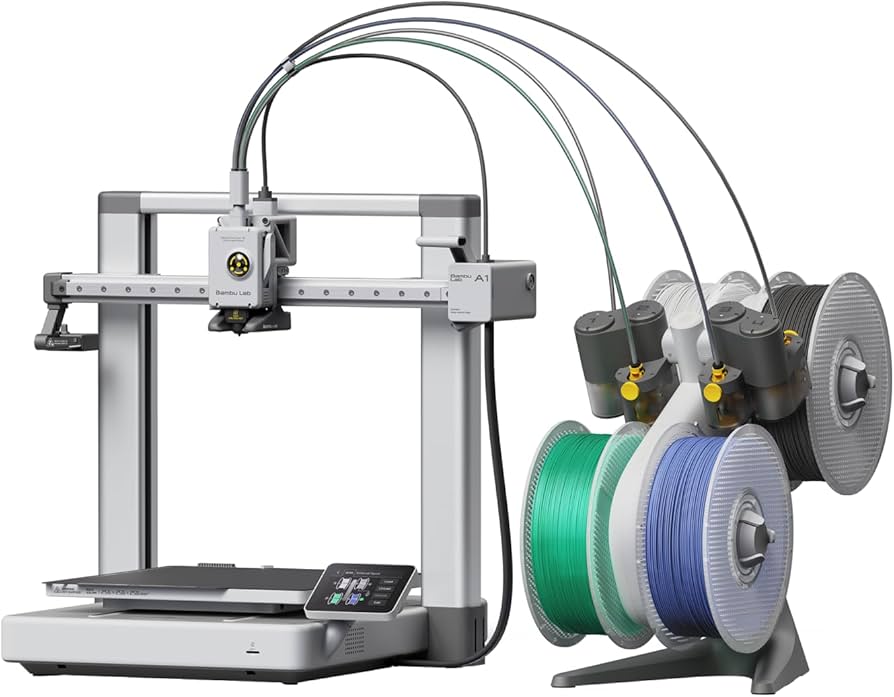Compare Ender 6 vs A1
Comparison between the best 3D printers
Choose the best 3D printer at the best price. The cheapest 3D printers are here.
Buy a 3D printer here with 3D Fila.
 |
 |
|
| Model | Ender 6[BUY Ender 6] |
A1[BUY A1] |
| Printing Material | Filament | Filament |
| Buy Filament for Creality 3D Ender 6 | Buy Filament forBambu Lab A1 | |
| Estimated price | $499,00 | $700,00 |
| Manufacturer | Creality 3D | Bambu Lab |
| Release Year | 2020 | 2023 |
| Print Volume [mm] | 250x250x400 | 256x256x256 |
| Printer Size [mm] | 495x495x650 | 385x410x430 |
| Weight [kg] | 22 | 8,3 |
| Power Loss Recovery | YES | YES |
| Enclosed printer | YES | NO |
| Bed Leveling | Manual | Automatic |
| Filament End Sensor | YES | YES |
| Bed type | Heated | Heated |
| Power supply system | Bowden | Direct Drive |
| Standard nozzle | 0,4 | 0,4 |
| Maximum Nozzle Temperature [°C] | 260 | 300 |
| Maximum Bed Temperature [°C] | 100 | 100 |
| Maximum printing speed [mm/s] | 150 | 500 |
| Filament holder | YES | YES |
| Camera for supervision | NO | NO |
| Recommended filaments | PLA, TPU, ABS, PETG | PLA, PETG, TPU, PVA |
| Recommended slicers | Cura, Simplify, Slic3r | SuperSlicer, PrusaSlicer, Cura, OrcaSlicer |
| Maximum Resolution [mm] | 0,1 | 0,1 |
| Processor | 32 bits | |
| Display | Touchscreen TFT 4,3'' | Touchscreen 3,5 |
| Power Supply | 24V / 504W | 350 W |
| Connectivity | SD / USB | Wi-Fi, Bambu-Bus, Cartão Micro SD |
| Operating systems | Windows, Mac, Linux | Windows, Linux, Macbook |
| Date of registration in the system | 2021-04-15 | 2024-07-17 |
| Release date | 2020 | 2023 |
| Extra features | The Creality Ender 6 stands out in the world of 3D printers with its CoreXY system, offering fast and high-quality prints. With a robust design, it has acrylic panels to protect against air currents, optimizing the printing of materials that require higher temperatures. It features a generic Creality hotend, effective up to ~240°C. Its differentials include 10mm GATES belts, promoting stability at high speeds, and a 360W power supply for reliable performance. The machine also has an intuitive user interface through a 4.3-inch touchscreen. | The BambuLab A1 printer features fully automatic calibration, multi-color printing with the AMS system, active flow rate compensation, quick nozzle change with a clip, active motor noise cancellation, a build volume of 256x256x256 mm³, a maximum extruder temperature of 300°C, and a heated bed of up to 100°C. In addition, it has high precision, a machine health management system and an intuitive 3.5-inch touchscreen interface. |
| Support for multiple colors and materials (AMS and CFS) | NO | YES |
Notes * |
||
| Cost-benefit | 7 / 10 | 7 / 10 |
| Hardware | 2.5 / 10 | 4.2 / 10 |
| Tela | . | . |
| Print volume | 4 / 10 | 4 / 10 |
| Performance | 1 / 10 | 4 / 10 |
| [BUY Ender 6] | [BUY A1] |
Conclusion |
| In conclusion, when comparing the Creality 3D Ender 6 and the Bambu Lab A1 3D printers, several key factors emerge that can help users make an informed decision. The Ender 6 offers a lower price point, making it an attractive option for budget-conscious users. Its sturdy enclosed design is beneficial for printing with high-temperature materials, while its manual bed leveling system and larger weight contribute to reliability during operation. The print volume is slightly larger, allowing for taller prints, and the machine includes several features aimed at enhancing stability and print quality. However, it lacks some of the advanced features found in more modern printers, such as automatic calibration and quicker printing speeds. On the other hand, the Bambu Lab A1, released more recently, boasts advanced technological features that may appeal to more experienced users or those looking for versatile capabilities. It supports automatic calibration and faster print speeds, making it suitable for high-volume production environments. The A1's innovative features, like multi-color printing and an active flow rate compensation system, provide improved user experience and flexibility in material use. The design is compact and lightweight, although it does not include an enclosed build area, which may affect temperature-sensitive prints. In terms of performance, the A1 excels with higher speed ratings and advanced printing technologies, resulting in improved print quality and efficiency. However, it comes at a higher price, reflecting its enhanced capabilities. Ultimately, the choice between the Ender 6 and the Bambu Lab A1 will depend on the user's specific needs and budget. If affordability and solid print quality are the primary concerns, the Ender 6 remains a viable option. However, for those who prioritize advanced features and faster printing capabilities, the investment in the Bambu Lab A1 may be justified. |

